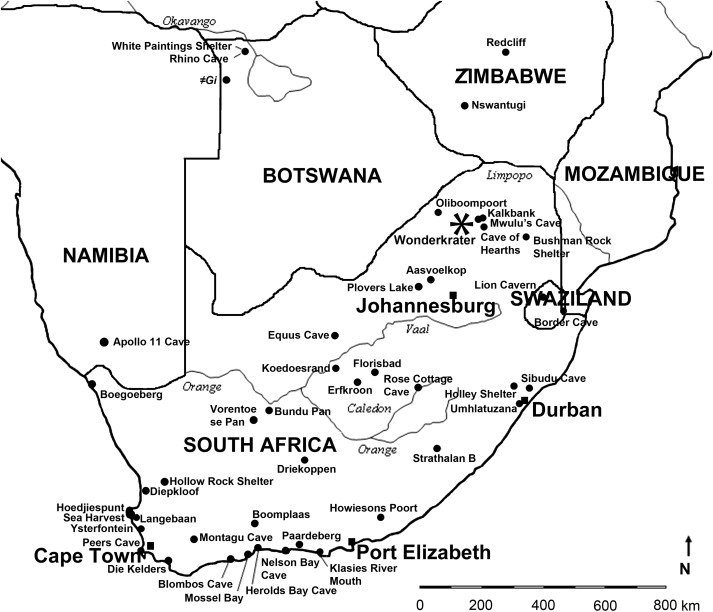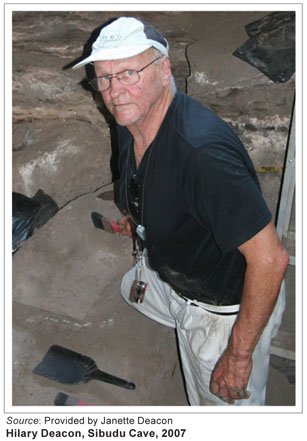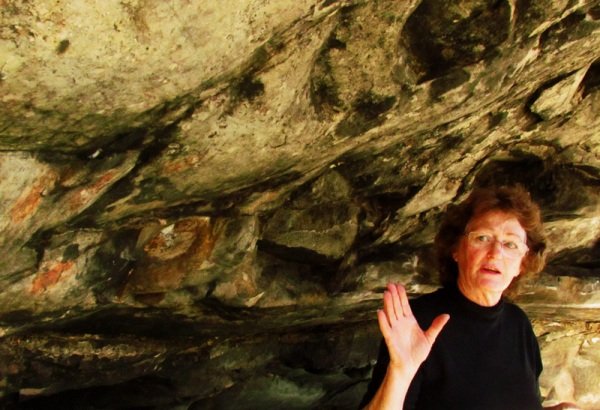The Later Stone Age in South Africa: Advances in Later Stone Age

Dear Reader
In this following series of posts we will be covering the Later Stone Age of South Africa, I highly encourage you to please read the Introduction and Historical Background posts to this series to bring you update to date with the information and terminology we have covered so far.
Advances in Later Stone Age (LSA)
It is now accepted that variability in stone artefacts reflects successive innovations, the selection of raw materials and changing styles of tool manufacture. Such changes were widespread and evidence indicates that similar artefacts were made over much of Africa. It is virtually impossible to distinguish, in the archaeological record, social or linguistic groupings during this period (ie the Stone Age [Deacon & Deacon 1996:6]).
Since 1960, a large number of regional research projects has been carried out in South Africa, Lesotho and Swaziland. Detailed and scientific excavations and also re-excavations of certain key sites from 1960s onwards have provided a wealth of information. This research has revealed the existence of earlier LSA industries underlying the coastal Wilton sites, thereby invalidating the original division of the LSA into Wilton and Smithsfield only. Interdisciplinary studies have contributed much to our knowledge of the environment, adaptation patterns, and the exploitation of natural resources and cultural developments of the LSA peoples. All of this, plus comprehensive faunal reports, spatial research, demographic patterns, plus a better understanding of how seasonal activities were scheduled, have been used by archaeologists to reconstruct prehistoric palaeonvironments and subsistence strategies.
Several new classification schemes have been proposed for the LSA to accommodate these newly discovered industries and the growing body of information. As long ago as 1974 Sampson tried to integrate data from all South African archaeology sites. He recognised four successive industrial complexes within the LSA and various regional variants and subdivisions. In order of age (ie from older to younger) he recognised the Oakhurst, the Wilton (and divided into Coastal and Interior variants) and the Smithfield (with a possible so-called Strandloper industry). Sampson relied heavily on population movements and the availablity of raw material to explain various technological changes - he did not take into account the primary role of environmental influence.
In his synthesis of the LSA period, Hilary Deacon suggested that the spatial patterning of LSA adapations was the result of differences in plant food availability (simply because different plants grow in different areas). In the arid northeastern parts, people depended on plants with water storage abilities, while in the savanna and the forests of the north and northeast regions, they rely on fruits and above-ground foods. In the southern parts, and in particular the Cape, people depended on underground plant foods such as corms and tubers. Given all this, we can expect to see a corresponding varialility in stone tool assemblages; the point we are making here is that lithic material is invaluable as an indicator of different subsistence startegies. A good example of this varialibility is the difference between scraper-dominated assemblages in South Africa and backed-tooled dominated assemblages in areas north of the Limpopo (eg Zambia. It has also been suggested that skin-clothing and bark-clothing and associated implements for making these items account for the differences in tool frequencies (Parkington 1984).
Excavations by Hilary and Janette Deacon at sites such as Wilton Rock Shelter, Melkhoutboom, Bloomplaas and Klasies River Mouth represent some of the most detailed regional studies. After Hilary Deacon had re-excavated the Wilton Rock Shelter, Janette Deacon analysed the changes through time in the function and style of artefacts. She used this information to show that the artefact sequence exhibits clear but gradual changes over a period of time, both in terms of the relative frequencies of the formal tools and in terms of the size and shape of scrapers and microliths. These gradual changes imply an evolutionary development in the technology used.
Contrary to earlier hypotheses and theories, no archaeological evidence for mass migration has ever been found in South Africa. Migration has only played a minor role in the introduction of pottery and domestic animals to LSA peoples (ie some 2000 years ago).
Adaptive Strategies
Research at various sites using information obtained from the analyses of faunal and floral remains indicate that the change in artefact assemblages coincided broadly with changing hunting patterns. This information resulted in Hilary Deacon formulating a model to accommodate, in his synthesis of the LSA, the growing wealth of economic and palaeoenvironmental data indicating the existence of different assemblages. This model was an alternative to the previous model of cultural change, which focussed on migration and raw material availability as the prime movers in technology and typology changes (Mitchell 1988:6).He suggests that, in the southern and eastern Cape, where most of the detailed LSA research projects are concentrated, a series of changing adapations was the result of changing environmental circumstances. The terms Robberg, Albany and Wilton were used for these successive episodes of changing adaptive strategies. These terms reflect the differences in stone tools assemblages, as well as specific adaptive strategies on the part of prehistoric people in order to cope with changes in their environment.
These research projects and findings have helped to transform Goodwin and Van Riet Lowe's original cultural model (which was drawn up to explain regional variability between intersite assemblages) to a chronological and spatial variability model that accounts for different tool frequencies in assemblages. Social interpretations and ethnographical analogy also form a major part of current LSA research.
With all of our current information that we have covered so far, we will now discuss the Later Stone Age of South Africa in more in detail in our following posts....
Images are link to their sources in their description and references are stated within the text.
Thank you for reading
In the next post we will cover Climatic conditions during the LSA
Thank you @foundation for this amazing SteemSTEM gif





